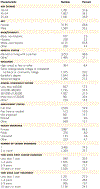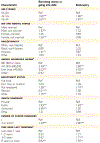For Working-Age Cancer Survivors, Medical Debt And Bankruptcy Create Financial Hardships
- PMID: 26733701
- PMCID: PMC6057727
- DOI: 10.1377/hlthaff.2015.0830
For Working-Age Cancer Survivors, Medical Debt And Bankruptcy Create Financial Hardships
Abstract
The rising medical costs associated with cancer have led to considerable financial hardship for patients and their families in the United States. Using data from the LIVESTRONG 2012 survey of 4,719 cancer survivors ages 18-64, we examined the proportions of survivors who reported going into debt or filing for bankruptcy as a result of cancer, as well as the amount of debt incurred. Approximately one-third of the survivors had gone into debt, and 3 percent had filed for bankruptcy. Of those who had gone into debt, 55 percent incurred obligations of $10,000 or more. Cancer survivors who were younger, had lower incomes, and had public health insurance were more likely to go into debt or file for bankruptcy, compared to those who were older, had higher incomes, and had private insurance, respectively. Future longitudinal population-based studies are needed to improve understanding of financial hardship among US working-age cancer survivors throughout the cancer care trajectory and, ultimately, to help stakeholders develop evidence-based interventions and policies to reduce the financial hardship of cancer.
Keywords: Bankrucpty; Cancer; Financial hardship; LIVESTRONG; Medical debt.
Project HOPE—The People-to-People Health Foundation, Inc.
Figures




References
-
- Institute of Medicine. Ensuring patient access to affordable cancer drugs: workshop summary Washington (DC): National Academies Press; 2014. - PubMed
-
- Bach PB. Why drugs cost so much. New York Times. 2015. January 14.
Publication types
MeSH terms
Grants and funding
LinkOut - more resources
Full Text Sources
Other Literature Sources

